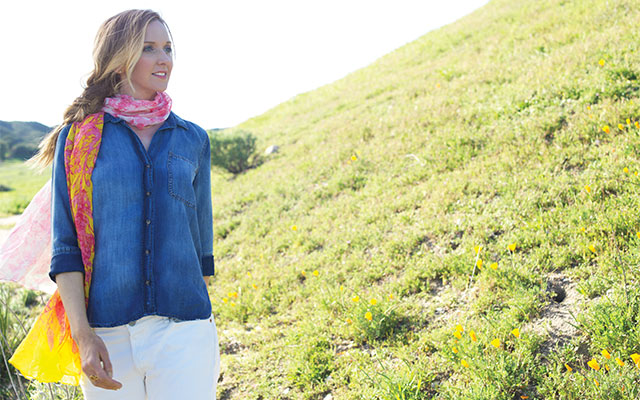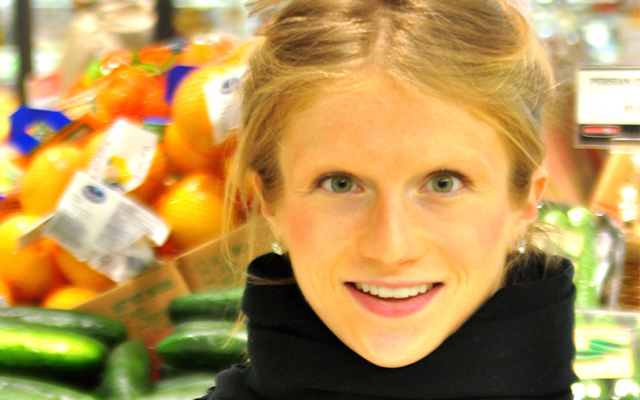Imagine this: You’ve followed a specific diet for years. In fact, it’s not just a diet or a lifestyle; it’s something you’ve built your career on. But after a decade, your body begins craving something entirely different. If you give in to the craving, it would cast doubt on your beliefs, your identity, and your way of life.
This is Alexandra Jamieson’s story.
The co-creator of the Oscar-nominated documentary Super Size Me and author of four books, including her most recent, Women, Food, and Desire, Jamieson is intimately familiar with the struggle that ensues when your body desperately wants something your mind has rejected.
Raised on an organic farm by health-conscious parents, Jamieson grew up eating whole foods, but entered adulthood with a major sugar addiction. “Humans are rebellious creatures: When we grow up in a home with strict rules, we like to rebel,” she explains.
Years of pushing dietary boundaries and feeding sugar cravings made her sick, but she was leery of the prescription drugs her doctors offered as a cure. After some research, she began following a vegan diet. She felt better, ended an unfulfilling relationship, and adopted a way of living that she says inspired her to eat and act with intention.
More than 10 years later, after promoting the health benefits of veganism as a chef, teacher, and author, Jamieson suddenly began noticing signals her body was sending. “I was extremely stressed, going through a divorce, and my hormones were on a roller coaster — because your body changes as you get older and after you give birth — and I started craving meat,” she says.
After grappling with the shame that too often accompanies cravings — and a backlash from her vegan friends, readers, and students — Jamieson found a way to accept the messages her body was delivering and be at peace with her decision.
While once again changing her diet and lifestyle, she tuned in to a new mission. Today, her heart’s set on helping women reclaim their desires, bodies, and lives.
Q&A
Experience Life | Your new book discusses the relationship between women, food, and desire. How is that relationship different for women than it is for men?
Alexandra Jamieson | We all want food and sex and we all have desires. But women are taught from an early age that living in a female body means your body and sex are dangerous, yet your worth is based on how sexy you look and how much you weigh. You need food but shouldn’t eat too much of it. So dealing with food, sex, and our bodies becomes like living in a minefield.
EL | You’ve dubbed yourself “a cravings whisperer.” What are our cravings trying to tell us?
AJ | Cravings and desires are built into our DNA. If sweet didn’t taste good and light up our brains, we wouldn’t eat enough food as babies; we wouldn’t thrive and grow into adults. That’s why mothers’ breast milk is sweet and why we have such a nice hit of happy hormones when we taste sweetness. It’s so that we will eat and thrive.
Cravings are the body’s call for balance, and they provide important information. Our bodies are like tuning forks — they have ways of letting us know when we’re out of sync.
We’re taught to avoid cravings and fight against them, which is why it’s so tough to ask, “What does this craving mean?” Being able to get curious about them is a powerful stance to adopt. So I lead women through the journey of getting comfortable with their cravings and turning them into allies instead of enemies.
Let’s take sugar: We’ve all been told sugar is bad and we shouldn’t eat it. How’s that working out for us?
What if we took the control and judgment out of it and acknowledged that sugar has a specific purpose in the body, and when you crave it, there’s a cause.
There are four root causes to any craving — bacterial, nutritional, emotional, or physical — and a craving could have more than one cause. When you start to get curious about those and how your sugar craving may be springing up from your body, then you can start to address the true underlying imbalance, rather than trying to control your body and its desires.
EL | What might be the underlying causes of a sugar craving?
AJ | There are more bacteria and yeast cells in our bodies than human cells, and we have a symbiotic relationship with them. We’re their hosts and they serve important functions for us. They keep our skin healthy, fight off invaders, and help us absorb and break down nutrients. But they can become imbalanced.
For example, when kept in balance, candida yeast doesn’t cause problems, but it can overgrow — often due to overuse of antibiotics or a highly refined diet. If there’s too much candida yeast in your body, you start craving sugar because that’s its preferred form of food.
Cravings are also our bodies’ way of trying to get nutrients. Many of us are overfed and undernourished. We get enough calories, but don’t get the nutrients, minerals, vitamins, or trace elements we need because we’re eating mostly refined foods. Even if we’re eating organic foods, our soil is overfarmed and depleted of minerals.
Craving chocolate is common. It’s very high in magnesium. In this really brilliant way, our bodies know that if you eat it, you’ll get a nice hit of magnesium plus some sugar and good fat.
EL | You believe that another thing we crave — but often ignore — is fun.
AJ | Yes. In the United States, we define ourselves by what we do for a living, and play is not seen as valuable unless it’s for fitness. It’s also seen as embarrassing: “I’m not going to go out and Hula-Hoop! What if somebody sees me?”
EL | How do we overcome those beliefs about play?
AJ | We have to schedule it until it becomes second nature again. It used to be our only mode of operating, but as adults, we have to trick ourselves into remembering what it was like to be a kid.
When I was growing up on a farm outside of Portland, Ore., nature was my playground. I’d ride my bike down to the creek, build dams with rocks, and chase salamanders. That’s hard to come by in New York City, so I intentionally schedule playtime in nature.
I also have a kitten that likes to chase one of those things on a wire. I can do that with her for 10 minutes, and it’s like meditation. I’m not thinking about anything; I’m just having fun.
I’m on a mission to get more of that into our lives. It can start by getting a few toys. I have my mini trampoline, my roller skates, and my bike, and they help me move and have more fun. Ask yourself, What did I love to do as a kid? Then go do it. Give yourself permission to let go, to just be in your body, and to have fun.
Photography by Kwaku Alston



This Post Has 0 Comments